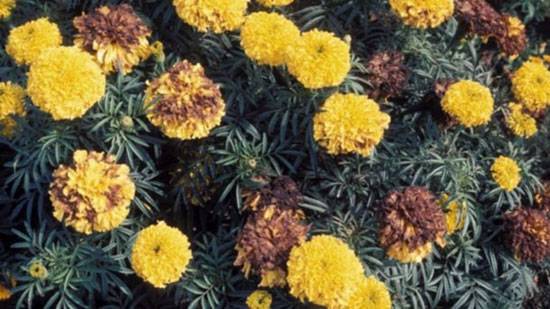Marigold
Bud Rot

Alternaria dianthi
Fungal Disease
Flower Bud Rot, caused by Alternaria dianthi, is a fungal disease that affects marigolds, particularly the flower buds and leaves. Here’s a point-wise breakdown of the disease, its symptoms, and management strategies.
1. Causal Organism
- The fungus Alternaria dianthi is responsible for causing flower bud rot in marigold plants.
2. Symptoms
- Flower Buds: Infected young flower buds shrivel and turn dark brown.
- Leaves: The pathogen also infects leaves, causing brown necrotic spots on the margins and tips, particularly on older leaves.
- Blight: Severe infections can lead to blight, damaging the foliage and affecting plant health.
3. Favorable Conditions
- Warm, humid conditions promote the development of the disease, making proper ventilation and moisture control essential.
4. Management
- Cultural Practices: Remove infected plant debris and avoid overcrowding plants to ensure good air circulation.
- Fungicide Use: Spraying appropriate fungicides can help control the spread of the disease, especially when applied at the early stages of infection.
By implementing these practices, flower bud rot can be effectively managed to protect marigold crops.




